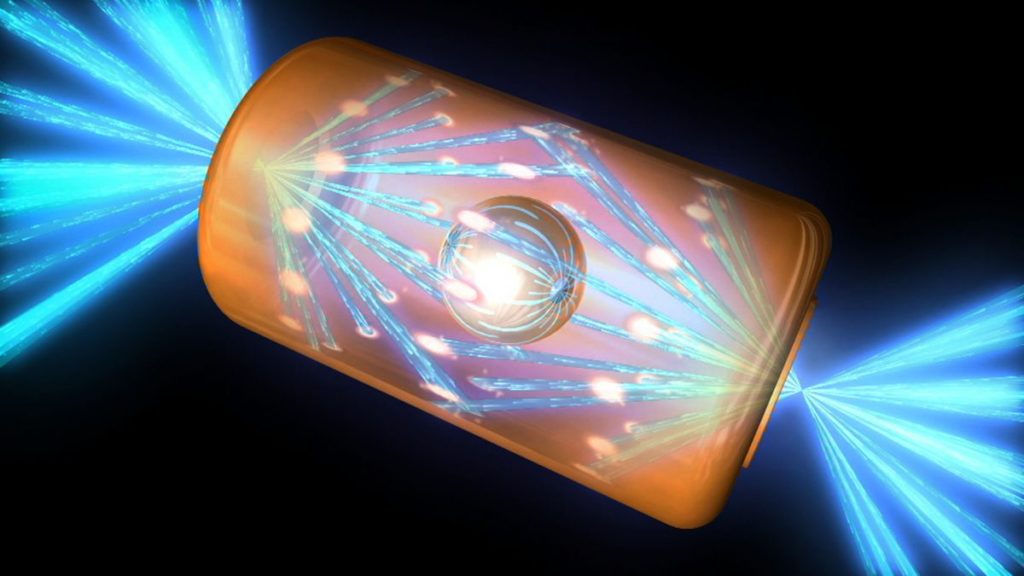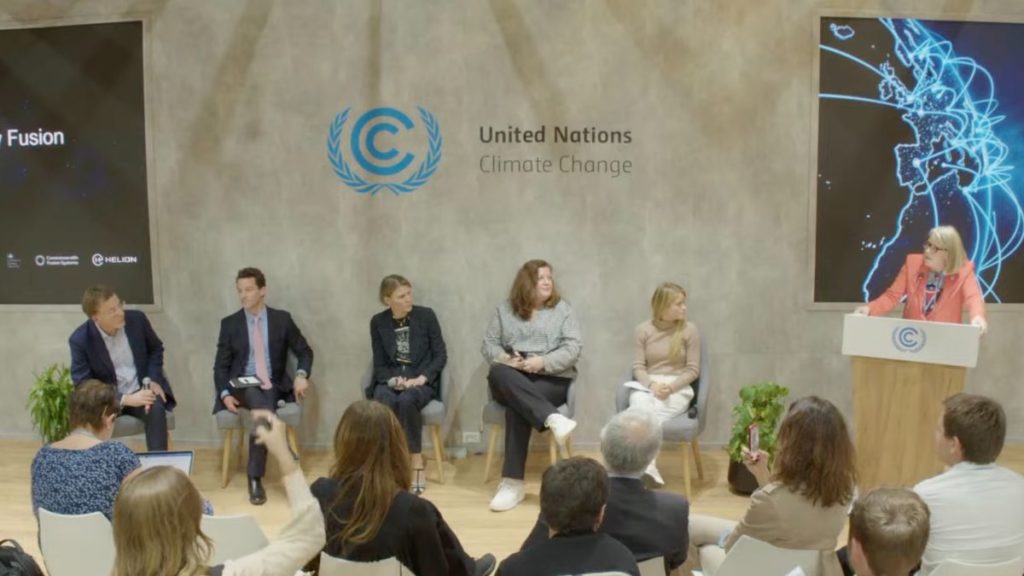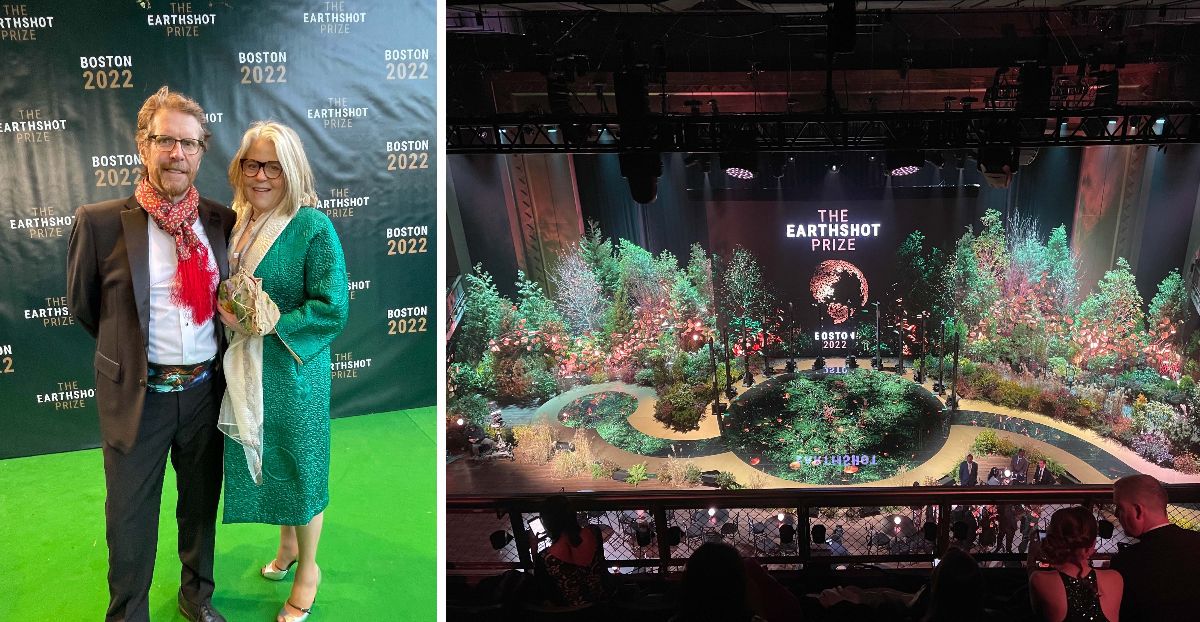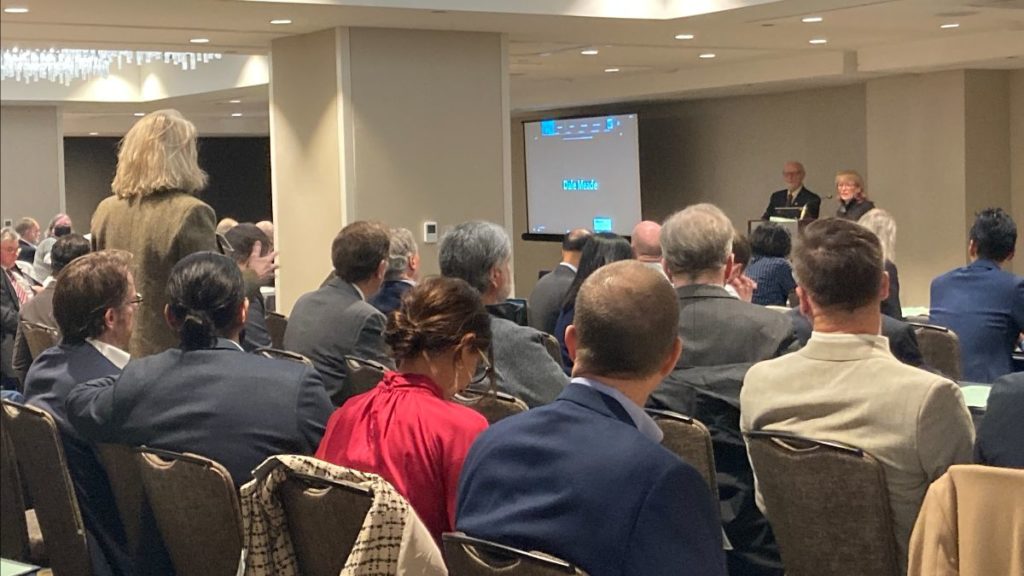
Our November news was preempted by the exciting news out of the National Ignition Facility (NIF) at Lawrence Livermore National Laboratory on December 5th that they had achieved the first-ever “scientific energy gain” in a controlled fusion experiment. Scientific energy gain, explained in one of the clearest explanations we have seen in a blog by ARPA-E, is when “fusion energy exceeds the input energy crossing the containment-vessel boundary, which encapsulates the plasma science of the experiment.” We are still a ways off from fusion power generation at scale, but this result represents a significant achievement. The challenge will be overcoming remaining scientific and technological hurdles soon enough to make a difference!

Fusion makes another splash at COP27
Last year, Boris Johnson made history by putting fusion on the agenda for the 26th Conference of the Parties, hosted in Glasgow. This year, fusion was once again on stage thanks to fashion industry leader and fusion energy advocate, Gabriela Hearst, who hosted a panel entitled Fusion: Clean Energy for All inside the UNFCCC’s Pavilion on November 15 (Energy Day) at COP27 in Sharm El-Sheikh, Egypt.
ECG’s President Jane Hotchkiss moderated the panel with Tim Bestwick, CTO of the UK Atomic Energy Authority, Jennifer Ganten, Chief Movement Builder at Commonwealth Fusion Systems, Jessie Barton, Communications Lead at Helion Energy, David Livingston, Senior Advisor in the Office of Special Presidential Envoy for Climate John Kerry, and Gabriela Hearst. The panel covered high level topics such as why fusion; what’s changed to shorten the timeline to fusion commercialization; how to ensure diversity and inclusion in the fusion industry; and how to build the supply chains and workforce that will be needed for commercial fusion. A full-length replay is available here.

ECG announces the launch of Generation Fusion
Kayla Miller, ECG’s Director of Education, spent five days at Paige Elementary School in November sparking fifth grade students’ awareness and excitement about fusion.
With the intention of garnering participation in the Generation Fusion Pilot Program, Kayla presented a Fusion Superhero Story to the fifth-grade classes at Paige Elementary School in Schenectady, NY on November 9, 14, 15, 17, and 29. The first four days were spent presenting a story about fusion where students were encouraged to become their own superheroes. The last day was a presentation about the upcoming pilot program.
The official launch date of the Generation Fusion Pilot Program was December 12. Eight fifth grade students from Paige Elementary School comprise the first cohort of this after school program. Generation Fusion’s education begins!

Silent Spring Revolution at the JFK Library
Returning home from Sharm El-Sheikh and COP27 on November 17, ECG President Jane Hotchkiss headed straight to the JKF Library from the airport where she introduced ECG and our mission to members of the New Frontier Network. ECG was one of the sponsors for the JFK Library’s event celebrating Douglas Brinkley’s new book, Silent Spring Revolution. A renowned writer, known for his presidential biographies, this is his first foray into the existential climate crisis.
NRC Public Meeting held on November 8th
The Nuclear Regulatory Commission (NRC) met on Tuesday, November 8, to discuss different approaches to regulating commercial fusion energy in the U.S. At that meeting, stakeholders, including technical experts from the Department of Energy, representatives of Agreement States, a representative from the U.K. Department for Business, Energy, and Industrial Strategy (BEIS), and members from the private fusion energy industry, agreed that the regulation of fusion energy should be separated from the regulation of nuclear fission. A formal decision by the commissioners is still some months away.

ECG invited to attend the Earthshot Prize Awards Ceremony
The Earthshot Prize was launched two years ago, in 2020, by HRH Prince of Wales and Sir David Attenborough, the English broadcaster and naturalist best known for his BBC TV series, Planet Earth. According to the Royal Foundation website, in addition to “identifying evidence-based solutions to the biggest environmental problems the planet faces, The Earthshot Prize aims to turn the current pessimism surrounding environmental issues into optimism that we can rise to the biggest challenges of our time.”
Every year from 2021 until 2030, The Earthshot Prize Council will award £1 million to five winners, whose evidence-based solutions make the most progress towards solving the biggest environmental challenges.
This year, the awards ceremony was held in Boston on December 2, and ECG’s Jane Hotchkiss and Wally Johnston were invited to attend. The hope is that achievements in the fusion industry will soon merit such a prize.

Developing a diverse fusion workforce
ECG was invited to participate in a Congressional briefing on December 6, in Washington, DC. Jane Hotchkiss joined the panel with Hakeem Oluseyi, President of the National Society of Black Physicists, Javier Garay, Associate Dean for Research at UCSD’s Jacobs School of Engineering, Troy Carter, Director of the Plasma Science and Technology Institute at UCLA, Sehila Gonzalez De Vicente, Chair of Women in Fusion, Zabrina Johal, Senior Director of Strategic Development at General Atomics, and moderated by Evan Polisar, Strategic Communications and Government Affairs Manager at General Atomics. Panelists shared their perspectives on the opportunities and challenges for the fusion industry to grow in a way that supports a diverse, equitable, and inclusive workforce.

Fusion Power Associates 43rd Annual Meeting
ECG’s Jane Hotchkiss, Wally Johnston, and Karen Gibson connected with colleagues and friends for the latest in scientific and industry-wide progress at the Fusion Power Associates Annual Meeting in Washington, DC on December 7-8. In her keynote address, Geraldine Richmond, Under Secretary for Science and Innovation at DOE, stressed the commitment of the Administration and DOE to improve diversity and inclusion in the workforce, and urged the members of the fusion community to do better.
Spotlight on Karen Gibson, Director of Operations

Karen Gibson joined ECG as Director of Operations in December 2020. Her interest in fusion was peaked when she serendipitously met co-founders, and neighbors, Jane Hotchkiss and Wally Johnston as they were forming ECG as a nonprofit. The position provided her the opportunity to continue focusing on energy, but now, specifically in the context of an issue of special interest—climate change. Fusion’s potential to alter the trajectory of the current climate crisis, in partnership with renewables and other innovative clean energy sources, was appealing, and ECG’s mission to raise awareness and acceptance of the new technology challenging.
Prior to ECG, Karen worked three years for Secretary Moniz at the Department of Energy (DOE) in Washington, DC, where she ran two federal advisory committees that provided advice to the Secretary, in addition to two councils aimed at strengthening the strategic partnerships with the National Laboratories and promoting coordination across program offices within DOE. That experience included visits to many of the National Labs to hear firsthand about the unique capabilities of the labs and the work that they are doing to address energy and national security challenges. Prior to DOE, Karen coordinated several sustainability and energy initiatives at MIT—she was engaged in early outreach, communication, and governance efforts of the MIT Energy Initiative. Her career in energy and environmental arenas began over 30 years ago in the Texas Legislature working on environmental legislation.
Good Climate News!
Last month the Biden Administration announced $13 billion in funding to upgrade the U.S. power grid. According to the White House infrastructure director, Mitch Landrieu, this is the biggest federal investment in transmission and distribution in US history.
The International Energy Agency has finally acknowledged that renewables will grow at an exponential pace, stating that over the next five years the globe will add as much renewable capacity as it has over the last 20 years.
